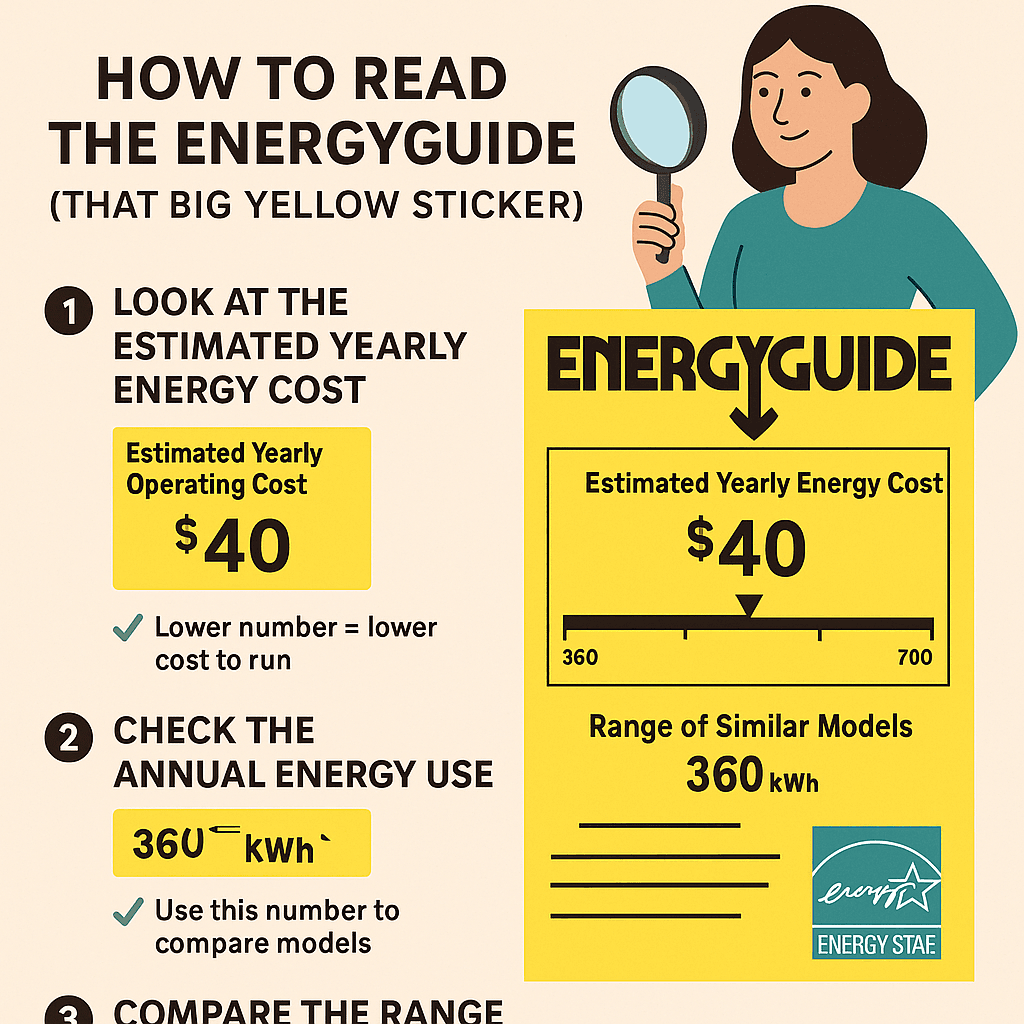Understanding Energy Star Ratings for Appliances

How to Read the EnergyGuide Label (That Big Yellow Sticker)
So you’re standing in an appliance aisle (or scrolling online) and see that yellow label. It might look a little technical at first, but here’s how to make sense of it in 3 quick steps.
Look at the Estimated Yearly Energy Cost
What it says: “Estimated Yearly Operating Cost”
What it means: This is how much money you’ll probably spend running the appliance each year—based on average energy prices in your area.
Lower number = lower cost to run.
If one washer says $25/year and another says $45/year, that $20 difference adds up fast—especially over the 10–15 years you’ll own it.
Check the Annual Energy Use
What it says: “Estimated Yearly Electricity Use” in kWh (kilowatt-hours)
What it means: This is the raw amount of electricity it uses per year. It doesn’t change based on electricity rates.
Use this number to compare apples to apples—even if you have solar panels or live somewhere with different electricity prices.
Compare the Range
What it says: A bar showing where this model falls compared to others of the same size/type.
Think of it like a scale:
- The left end = best in class (least energy used)
- The right end = energy hogs
You want to be on the left side of that bar whenever possible.
Bonus Tip: Spot the Energy Star Label
If the blue Energy Star logo is on the label too, it means the appliance is among the most energy-efficient of its kind, not just average.
Quick Example:
Here’s what a label on a new Energy Star fridge might say:
- Estimated yearly energy cost: $40
- Estimated energy use: 360 kWh
- Range of similar models: 360–700 kWh
Result: It’s a smart pick—both for your wallet and the planet.
Real-Life Hack:
If you’re comparing two models and one uses 50 kWh less per year, and electricity costs about $0.15/kWh:
50 x 0.15 = $7.50/year saved
Over 10 years = $75 saved
Multiply that across a few appliances? It’s hundreds in your pocket and a lower carbon footprint.
